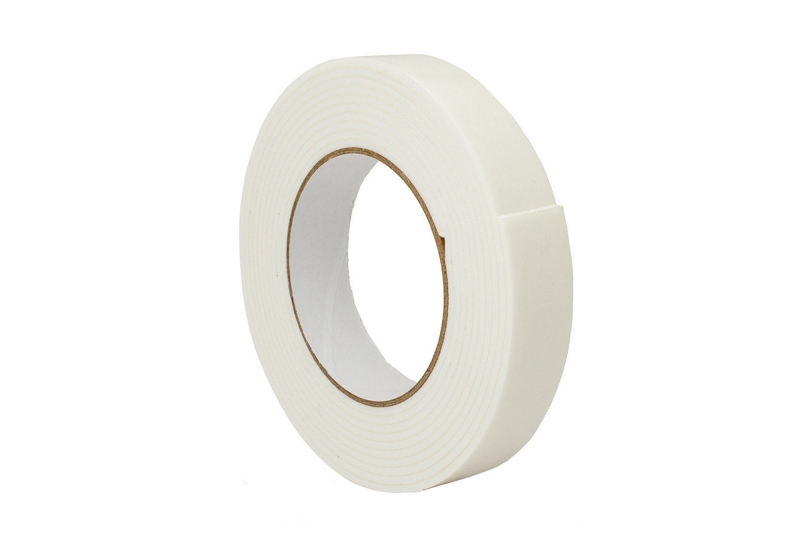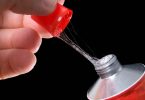The heavy-duty double-sided tapes or ribbons have sticky coatings on both sides. They are designed to stick two surfaces, and their manufacture makes them virtually invisible on the final product. As such, they lead to cleaner results with magnificent demonstrations of know-how. Unlike screws and rivets that can come off after a certain period of time, double-sided ribbons permanently adhere to the substrate and surface, while distributing the stress load evenly. Their use is wide and varied, as you will see below, and they are used in almost all industries and applied to different materials including glass, cardboard, walls, foam, steel, concrete, plastic, and wood.

The anatomy of double-sided tapes
Almost all heavy-duty adhesive tapes, including 3M ribbons, have two primary layers. The sticky layer can be one-sided or bilateral, as in the case of sticky ribbons. In a typical double-sided band, there are three main structures, and they include:
- Support is one of the main features of a sticky film. For ribbons intended for use on rough surfaces, ribbons with thicker foam may be best suited. However, if the tapes are intended for normal applications, the medium will consist of a thinner film.
- The lining is what is used to cover the sticky system with adhesive duct tape. This is an important structure of the tape because it is simple and easy to apply or remove. The linings in these bands may vary from manufacturer to manufacturer, although some of the best brands have paper and film protective linings that may also have additional features.
- Adhesive system – this is surely the most important feature of a heavy-duty duct film. The quality or effectiveness of your tape will depend primarily on the type of sticky system used in the film. Again, when choosing a quality sticky film, it is imperative to choose the tape based on the intended application, simply because different types of surfaces will require different degrees of stickiness to achieve a good result. While making your choice of tape, you should also consider how long and how long you want the link to last.

So why do we need heavy-duty double-sided tape?
Since double-sided ribbons can easily be applied to the back of objects, they have the characteristic of remaining invisible. This is a very good feature when it comes to decorative applications such as the installation of posters or light frames on walls, for example. Since most of the tapes are currently manufactured, their charging capabilities have increased significantly, increasing the range of their applications. Unlike in ancient times, you no longer have to damage the wall during drilling to be able to mount your decorative object. All you need is a heavy-duty duct film ribbon, and here we go! Here’s a look at the apps that dual-sided bands can respond to:
- For decoration projects
One of the areas where sticky ribbons are widely used is decoration. Before entering the stage, decorating professionals used sticky tapes to work on their décor, but these had drawbacks, particularly in terms of the visual appeal of the final product. However, with the use of sticky ribbons, the visual appeal of the final product is always there because the tape hides completely between the collage surfaces. In some cases, the bond is so perfect that no one will ever know that they are two objects glued together.
- For industrial applications
Many industries use this strong sticky material for a variety of applications. It is one of the best bonding solutions used in cars and other electronic devices to keep various parts in place. It is also very common to find adhesive films used in screens, speakers, and even mobile phones. For both the manufacturer and the repair of household appliances, including home electrical work, there is also a huge use of adhesive films. You’ve probably seen your technician use them to repair items such as air conditioners, refrigerators, ovens, or microwaves. And that’s because double-sided ribbons aren’t just for sticking surfaces.
- For the majority of household and personal projects
Heavy-duty tapes are used almost everywhere on things that need to stick together, mounted, or fastened. The following are some of the most common uses.
Housewrap- using a single-sided film could not stop the water from passing behind the tape because the other surface has no adhesive. But the dual-side adhesive one is another story. For overlapping seams, you can make sure that no water is going to pass through.
Crawlspace moisture barrier – a heavy-duty dual-side adhesive film is better than screws when it comes to waterproofing the crawlspace moisture barrier. Water may sip through screw slits but not through the tapes.
Wall insulation – this is very important. Many builders use adhesive cement without knowing the major disadvantages. Adhesive cement is very difficult to repair and the insulator could be damaged during the repair. This is not the case with the dual-side adhesive ribbons. They are easy to remove yet very sticky and strong.
Floor protection – during the house repair that is being done on walls or ceilings, you have to protect your floor, especially during the wall painting. To do this you need to cover your floor. There is no better way to protect your floor than using heavy-duty double-sided film because when the wall and ceiling jobs are done, this material can be easily removed without damaging the floor surface.
In addition to providing a lasting binding power, double-sided ribbons also have a high tolerance to heat. That’s why they can be used inside electrical appliances. Second, they are designed to dispel the constraints of their viscoelastic behavior. They can also prevent oxidation processes, moisture attacks, and chemical attacks. Finally, the ribbons are resistant to ultraviolet rays, which means you can use them safely outdoors without fear of losing the connection after exposure to the sun.
Conclusion:
A heavy-duty double-sided ribbon is a must-have material inside your house. Sometimes, you have to hang something on your wall, connect two surfaces, or fix the wires of your appliances. Without a material on hand, these simple-to-do things could be a problem. It’s always better to be prepared than run to the nearest hardware when you needed most.







